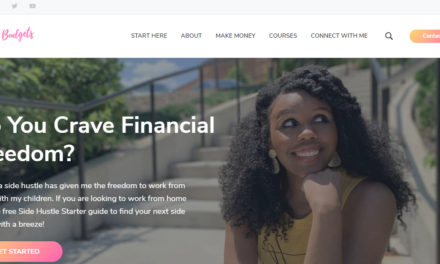
OCTOBER 13, 2023
5 things to do
Let Social Work for Your Business
Flip the script on social media.
Instead of helping build its business, use it to build your creator business.
That’s the advice from Tim Stoddart, who shared his lessons in cracking the social media code of business and monetization at the Creator Economy Expo.
Tim is the owner of Copyblogger and Recovery Local. He also is the CEO of the consulting firm Stodzy Internet Marketing. He knows of which he speaks.
He grew his email list to 26K in a few months with a newsletter with an average 47% open rate and 2.6% click-through rate. In the first four months of 2023, he earned over $8.3K in newsletter sponsorships, saw $5.3K in monthly recurring revenue for Copyblogger Academy, and earned $9K a month from SEO consulting.
1. Know the ranking order of social for help: Tim built his email list through X and LinkedIn. But, he cautioned CEX attendees, that the impact of X began diminishing significantly in the spring.
He says LinkedIn continues to get better and sees Instagram as worth doing. But Facebook is worthless except for running ads, and TikTok is toxic. If creators want a dopamine hit, YouTube Shorts can bring big reactions but not necessarily a big email list.
2. Use valuable tools: Every creator should have a go-to toolkit. Tim’s go-to resources include Hypefury and ConvertKit.
He uses Hypefury to create and automate his social media. The free version is only for X, but its $15.83-a-month version automates for Facebook and Instagram, while the $40.83-a-month version also automates for LinkedIn (among other features.)
Tim says he spends about 15 minutes using the tool to populate his social media platforms for three or four days.
He uses ConvertKit to distribute his newsletter and uses its automation sequence for emails selling his other products.
3. Repurpose your content: Take your big-idea content and chop it into as many ideas as possible. Tim’s system? Write a blog article or newsletter. Turn it into a thread for X and/or a long-form LinkedIn post. Turn those ideas into tweets. Turn those tweets into carousel images for Instagram.
With social media, post as much stuff as possible because you have no idea what’s going to work or not,” Tim says.
4. Look at the social metric that matters: Impressions and views can be good, but they don’t really matter. What does matter are the views of your profile prompted by your social content. Tim says views of his profile or bio lead people to his email list – and that’s the only number that counts in getting social to work for your business.
5. Create a product evolution: Tim advocates for three tiers of content offerings – free, front-end products, and back-end products.
Free content – newsletters, podcasts, YouTube channels, etc. – can be monetized through sponsorships. He favors newsletters because those ads net a higher rate (i.e., newsletters average $45 per 1K audience members vs. YouTube videos that get about $15 per 1K viewers).
Front-end products are priced for volume. Online courses, ebooks, and digital content products usually fall into this category. They appeal to the masses. While they bring in lower revenue, they yield high profits – and average a $99 to $500 price point.
Back-end products, such as masterminds, consulting, or other personalized services, are priced for exclusivity. They appeal to your niche’s elite, bringing higher revenue and profit margins. Think $2K or more per transaction.
As you contemplate how to use Tim’s successful process in your business, I’ll leave you with his motivating words: “If I can do it, you can do it. I promise.”
– Ann Gynn
5 things from the tilt
- Joe breaks down four key trends, including the move to in-person events, the AI-spending freeze in consulting, an overall spending indicator (student loans), and more. (Content Inc.)
- Joe and Robert discuss whether AI chatbots are getting out of control … plus the demise of social traffic to your website. (This Old Marketing)
- Let’s chat in real time this Tuesday for Tilt Your Business: A Weekly Mastermind for the Creator Economy. Starts at 12 p.m. US EST with Tilters Michelle Peterson Clark and Ann Gynn.
- CEX2024 Call for Speakers is now OPEN. We are looking for original talks that will help content creators build audiences, drive revenue, and refine processes. Submit today!
- ICYMI: Joanna Penn Turns Early Days of Blogging and Podcasting Into Multiple Six-Figure Business
5 things to know
Money
-
Moderately better: Funding for creator economy startups in the US is showing slow signs of recovery after its record low in Q1. Deals for Karat and link-in-bio startup Komi were big contributors. (The Information)
Tilt Take: No one should expect the creator economy to be on an upward-only trajectory, whether that’s startups or your own business. Ups and downs are par for the course. -
Recognition: A report on influencer marketing had this subheadline in the piece: “Creators function as standalone media channels.” (Insider Intelligence)
Tilt Take: Yea! Great to hear what we and you have known all along – you’re growing a media company, not winning popularity contests.
Audiences
-
Really not real: New Zealand-based Yabble launched a product that offers real-time interaction with virtual audiences that emulate real customers. These AI-generated “People” can take surveys, do one-on-one interviews, or mimic a forum-like research experience. (Mr. Web)
Tilt Take: Fascinating and scary. It might be worth a test, but talking and surveying real humans in your audience is a much better route.
Tech and Tools
-
Relate this: YouTube now lets Shorts creators add a related video as part of the upload flow on desktop devices. (YouTube Liaison)
Tilt Take: A time-saving feature like this is nice – just remember to add related videos to keep your audience viewing your content.
And Finally
-
Spill the tea: Canopy launched a social networking app for content creators to connect, crowdsource info, and share the secrets they learn. They also plan to monetize the app through additional features. (Tech Crunch)
Tilt Take: You can sign up for its waitlist. We tested it, and it seems the app is only available to iOS users.
Be Part of the TILT Nation
Share The Tilt Newsletter with other content creators and get exclusive swag and more.
Your unique link: https://www.thetilt.com?rh_ref=[RH CODE GOES HERE]
Track your referrals here.
Or share via Twitter, LinkedIn, Facebook, or email.
*Please note the rewards program is only available to US readers at this time. The Tilt reserves the right to reject referrals at their discretion.
Get more of the Full Tilt stories on TheTilt.com.
Know a content creator who’s going full tilt? DM us or email [email protected].
Want to advertise on The Tilt? Go here.
Or email us at [email protected].
Interested in the tools we use? Check out our Tilt Tech Stack here.
Was this email forwarded to you? Get your own sub here.
Copyright ©2023 Lulu Press, Inc. All rights reserved.
Update your preferences | Unsubscribe | 700 Park Offices Dr., Suite 250, Durham, NC 27709





